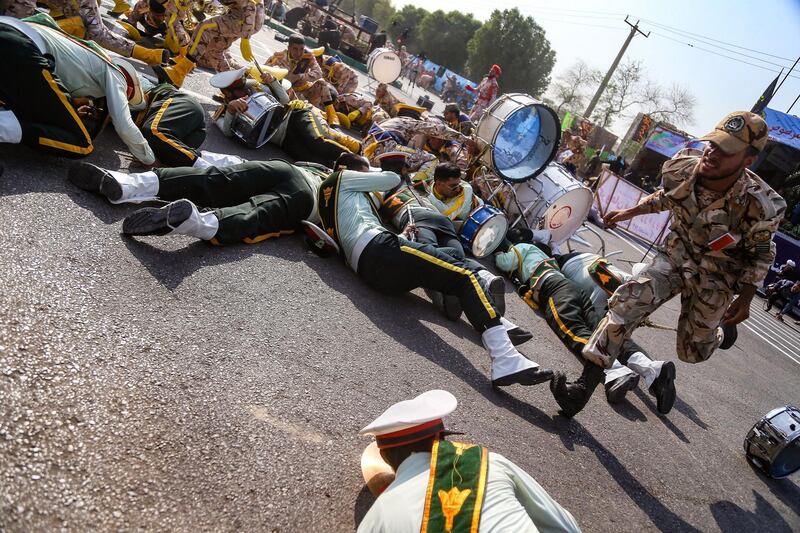When Iranians began protesting across the country in late December against failing public services, economic malaise and the regime’s expensive regional conquests, demonstrations quickly turned violent in Khuzestan.
Three months later, thousands of members of this south-western province’s significant Arab minority spilled onto the streets to demonstrate against their specific treatment by the Iranian regime.
Those protests – and the many that have followed – reflected the anger simmering for decades among an Arab minority in Iran that has long felt oppressed and alienated.
It is against that backdrop that last week’s terror attack in Ahvaz – the capital of Khuzestan – took place.
On Saturday gunmen opened fire on an Iranian Revolutionary Guard Corps military parade, killing at least 25 people and wounding more than 60. It was Iran's deadliest terror attack for a decade.
The separatist Ahvaz National Resistance was quick to claim the attack, which killed eight IRGC members. So too did ISIS, although that group’s claims carry no weight.
Meanwhile, the Iranians have blamed foreign powers, chiefly the US.
Supreme Leader Ayatollah Ali Khamenei, who commands the IRGC, said the attack demonstrated “the atrocity and viciousness of the enemies of the Iranian nation”. But in its search for blame, this repressive regime is looking in the wrong direction.
Arab separatism has deep roots in Khuzestan, a key battleground in the 1980s Iran-Iraq war, the start of which, importantly, was being commemorated in Saturday’s symbolic military parade.
Arabs in Khuzestan have long complained of discrimination, unequal treatment and barriers to fair employment.
And while the oil-rich province is the backbone of the Iranian economy, it is among Iran’s least developed regions. As ever, the bounty of the land has not trickled down to its people. Add to that a ferocious drought, which has reportedly led to water being diverted to other provinces, and the likelihood of violence grows.
Meanwhile, the regime’s response to Arab protests has been particularly severe; earlier this year hundreds were rounded up in just a couple of weeks on charges of separatism, militancy and being agents of Saudi Arabia.
Every act of terrorism is a tragedy, regardless of its objective. But attempts by the Iranian regime to blame foreign powers for Saturday's deadly attack in Ahvaz obscure a less palatable reality – that systematic, and decades-long discrimination of an Arab minority in Iran has resulted in deep-rooted resentments.
Last year separatists blew up two oil pipelines in the province, while violence has reared its head sporadically over the past 10 years.
As the dust settles, we should think of the innocent victims and their loves ones – and take a moment not to make wild accusations against other countries, but to consider how deadly attacks of this kind can be prevented in the future.





